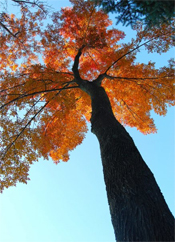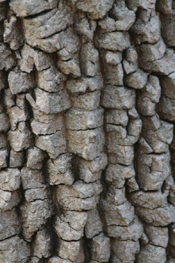Written by Admin and published on https://www.savatree.com/.
Trees play a significant role in our environment, and they also have many great benefits when we have them on our property. They provide shade and a cooler atmosphere during warmer months of the seasons. Like any other plant, we have to take proper care of them, so they don’t die from unwanted circumstance.
Why Trees?
Importance and Value of Trees

Since the beginning, trees have furnished us with two of life’s essentials, food and oxygen. As we evolved, they provided additional necessities such as shelter, medicine, and tools. Today, their value continues to increase and more benefits of trees are being discovered as their role expands to satisfy the needs created by our modern lifestyles.
Community & Social Value
Trees are an important part of every community. Our streets, parks, playgrounds and backyards are lined with trees that create a peaceful, aesthetically pleasing environment. Trees increase our quality of life by bringing natural elements and wildlife habitats into urban settings. We gather under the cool shade they provide during outdoor activities with family and friends. Many neighborhoods are also the home of very old trees that serve as historic landmarks and a great source of town pride.
Using trees in cities to deflect the sunlight reduces the heat island effect caused by pavement and commercial buildings.
Ecological & Environmental Value
Trees contribute to their environment by providing oxygen, improving air quality, climate amelioration, conserving water, preserving soil, and supporting wildlife. During the process of photosynthesis, trees take in carbon dioxide and produce the oxygen we breathe. According to the U.S. Department of Agriculture, “One acre of forest absorbs six tons of carbon dioxide and puts out four tons of oxygen. This is enough to meet the annual needs of 18 people.” Trees, shrubs and turf also filter air by removing dust and absorbing other pollutants like carbon monoxide, sulfur dioxide and nitrogen dioxide. After trees intercept unhealthy particles, rain washes them to the ground.
Trees control climate by moderating the effects of the sun, rain and wind. Leaves absorb and filter the sun’s radiant energy, keeping things cool in summer. Trees also preserve warmth by providing a screen from harsh wind. In addition to influencing wind speed and direction, they shield us from the downfall of rain, sleet and hail. Trees also lower the air temperature and reduce the heat intensity of the greenhouse effect by maintaining low levels of carbon dioxide.

Both above and below ground, trees are essential to the eco-systems in which they reside. Far reaching roots hold soil in place and fight erosion. Trees absorb and store rainwater which reduce runoff and sediment deposit after storms. This helps the ground water supply recharge, prevents the transport of chemicals into streams and prevents flooding. Fallen leaves make excellent compost that enriches soil.
Many animals, including elephants, koalas and giraffes eat leaves for nourishment. Flowers are eaten by monkeys, and nectar is a favorite of birds, bats and many insects. Animals also eat much of the same fruit that we enjoy This process helps disperse seeds over great distances. Of course, hundreds of living creatures call trees their home. Leaf-covered branches keep many animals, such as birds and squirrels, out of the reach of predators.
Personal & Spiritual Value
The main reason we like trees is because they are both beautiful and majestic. No two are alike. Different species display a seemingly endless variety of shapes, forms, textures and vibrant colors. Even individual trees vary their appearance throughout the course of the year as the seasons change. The strength, long lifespan and regal stature of trees give them a monument-like quality. Most of us react to the presence of trees with a pleasant, relaxed, comfortable feeling. In fact, many people plant trees as living memorials of life-changing events.
Trees help record the history of your family as they grow and develop alongside you and your kids. We often make an emotional connection with trees we plant or become personally attached to the ones that we see every day. These strong bonds are evidenced by the hundreds of groups and organizations across the country that go to great lengths to protect and save particularly large or historic trees from the dangers of modern development. How many of your childhood memories include the trees in your backyard or old neighborhood? The sentimental value of a special tree is simply immeasurable.
Practical & Commercial Value
Trees have supported and sustained life throughout our existence. They have a wide variety of practical and commercial uses. Wood was the very first fuel, and is still used for cooking and heating by about half of the world’s population. Trees provide timber for building construction, furniture manufacture, tools, sporting equipment, and thousands of household items. Wood pulp is used to make paper.
We are all aware of apples, oranges and the countless other fruits and nuts provided by trees, as well as the tasty syrup of North American sugar maples. But did you know the bark of some trees can be made into cork and is a source of chemicals and medicines? Quinine and aspirin are both made from bark extracts. The inner bark of some trees contains latex, the main ingredient of rubber. How many more uses can you name?
Property Value & Economic Value

Individual trees and shrubs have value and contribute to savings, but it is the collective influence of a well-maintained landscape that makes a real economic impact and has the greatest effect on property value. Direct economic benefits come from a savings in energy costs. Cooling costs are reduced in a tree-shaded home, and heating costs lowered when a tree serves as a windbreak. According to the USDA Forest Service, “Trees properly placed around buildings can reduce air conditioning needs by 30% and save 20-50 percent in energy used for heating.”
Property values of homes with well-maintained landscapes are up to 20% higher than others. Here are some eye-opening facts and statistics regarding the effect of healthy trees and shrubs:
- Homes with “excellent” landscaping can expect a sale price 6-7% higher than equivalent houses with “good” landscaping. Improving “average” to “good” landscaping can result in a 4-5% increase.– Clemson University
- Landscaping can bring a recovery value of 100-200% at selling time. (Kitchen remodeling brings 75-125%, bathroom remodeling 20-120%)– Money Magazine
- A mature tree can have an appraised value between $1000 and $10,000.– Council of Tree and Landscape Appraisers
- 99% of real estate appraisers concurred that landscaping enhances the sales appeal of real estate.– Trendnomics, National Gardening Association
- 98% of realtors believe that mature trees have a “strong or moderate impact” on the salability of homes listed for over $250,000 (83% believe the same for homes listed under $150,000).– American Forests, Arbor National Mortgage
Original post https://ift.tt/2I7BHjx.
The post The Importance of Trees on Your Property appeared first on Townsville Tree Lopping Services.
from Townsville Tree Lopping Services https://ift.tt/36tJBvR
via IFTTT











